Related Research Articles
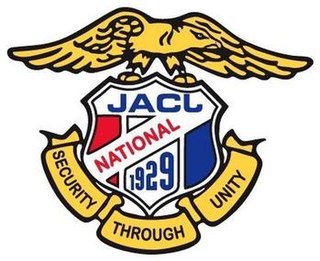
The Japanese American Citizens League is an Asian American civil rights charity, headquartered in San Francisco, with regional chapters across the United States.

Minidoka National Historic Site is a National Historic Site in the western United States. It commemorates the more than 13,000 Japanese Americans who were imprisoned at the Minidoka War Relocation Center during the Second World War. Among the inmates, the notation 峰土香 or 峯土香 was sometimes applied.

Ralph Lawrence Carr was an American attorney and politician who served as the 29th Governor of Colorado from 1939 to 1943.
The following article focuses on the movement to obtain redress for the internment of Japanese Americans during World War II, and significant court cases that have shaped civil and human rights for Japanese Americans and other minorities. These cases have been the cause and/or catalyst to many changes in United States law. But mainly, they have resulted in adjusting the perception of Asian immigrants in the eyes of the American government.
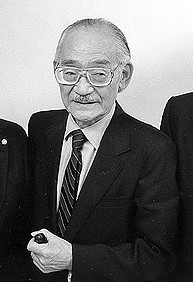
Minoru Yasui was an American lawyer from Oregon. Born in Hood River, Oregon, he earned both an undergraduate degree and his law degree at the University of Oregon. He was one of the few Japanese Americans after the bombing of Pearl Harbor who fought laws that directly targeted Japanese Americans or Japanese immigrants. His case was the first case to test the constitutionality of the curfews targeted at minority groups.
Violet Kazue de Cristoforo was a Japanese American poet, composer and translator of haiku. Her haiku reflected the time that she and her family spent in detention in Japanese internment camps during World War II. She wrote more than a dozen books of poetry during her lifetime. Her best known works are Poetic Reflections of the Tule Lake Internment Camp, 1944, which was written nearly 50 years after her detention and May Sky: There Is Always Tomorrow; An Anthology of Japanese American Concentration Camp Kaiko Haiku, for which she was the editor.
Togo W. Tanaka was an American newspaper journalist and editor who reported on the difficult conditions in the Manzanar camp, where he was one of 110,000 Japanese Americans who had been relocated after the Japanese attack on Pearl Harbor on December 7, 1941.
The Pacific Citizen (P.C.) is a national, award-winning semi-monthly newspaper based in Los Angeles, California, United States. The P.C. has been providing the leading Asian Pacific American (APA) news to the community since its inception in 1929. The newspaper is published by the Japanese American Citizens League, JACL, which is the nation’s oldest and largest APA civil rights organization.
James Yutaka Matsumoto Omura was the English language editor of the Rocky Shimpo newspaper in Denver, Colorado, during World War II. He was an outspoken critic of the expulsion of people of Japanese ancestry from the west coast of the United States to concentration camps, following the Japanese attack on Pearl Harbor. Subsequently, he became a vocal champion of the Nisei draft resisters, providing a 'substantial anchor' to the work of the Heart Mountain Fair Play Committee by publishing their grievances in the Rocky Shimpo. At a time when the Japanese American Citizens League (JACL) preached passive conformity with the federal government as the best policy, Omura became the JACL's arch-enemy for counseling active resistance.
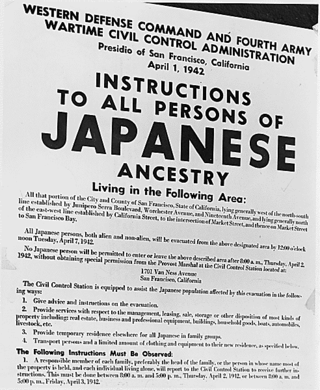
The Day of Remembrance is a day of observance for the incarceration of Japanese Americans during World War II. Events in numerous U.S. states, especially in the West Coast, are held on or near February 19, the day in 1942 that Executive Order 9066 was signed by President Franklin D. Roosevelt, requiring internment of all Americans of Japanese ancestry.
Aiko Herzig-Yoshinaga was a Japanese American political activist who played a major role in the Japanese American redress movement. She was the lead researcher of the Commission on Wartime Relocation and Internment of Civilians (CWRIC), a bipartisan federal committee appointed by Congress in 1980 to review the causes and effects of the Japanese American incarceration during World War II. As a young woman, Herzig-Yoshinaga was confined in the Manzanar Concentration Camp in California, the Jerome War Relocation Center in Arkansas, and the Rohwer War Relocation Center, which is also in Arkansas. She later uncovered government documents that debunked the wartime administration's claims of "military necessity" and helped compile the CWRIC's final report, Personal Justice Denied, which led to the issuance of a formal apology and reparations for former camp inmates. She also contributed pivotal evidence and testimony to the Hirabayashi, Korematsu and Yasui coram nobis cases.
Aki Kurose (1925–1998) was an American teacher and social-justice activist who helped establish Washington state's first Head Start program and worked to increase access to education and affordable housing, particularly among low-income and minority families.
The Heart Mountain Fair Play Committee was a group organized in 1943 to protest the draft of Nisei, from Japanese American concentration camps during World War II. Kiyoshi Okamoto formed a "Fair Play Committee of One" in response to the War Relocation Authority's controversial loyalty questionnaire in 1943, and was later joined by Frank Emi and other inmates of the Heart Mountain camp. With seven older leaders at its core, the Committee's membership grew as draft notices began to arrive in camp. To challenge their forced "evacuation" by the government, they refused to volunteer or participate in the draft, but the Committee required its members to be citizens loyal to the United States willing to serve if their rights were restored. By June 1944, several dozen young men had been arrested and charged by the U.S. government with felony draft evasion. While the camp at Poston, Arizona produced the largest group of draft resisters, at 106, the Fair Play Committee was the most prominent inmate organization to protest the draft, and the rate of draft resistance at Heart Mountain was the highest of any camp. The number of resisters eventually numbered nearly 300 from all ten camps.
Grayce Uyehara, née Kaneda, was a Japanese-American social worker and activist who led the campaign for a formal government apology for Japanese-American internment during World War II.

Ruth Tanbara was a Japanese American community leader in Saint Paul, Minnesota. From Oregon, she was the first Japanese American graduate of what is now Oregon State University.
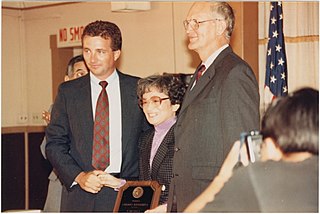
Cherry Kinoshita was a Japanese American activist and leader in the Japanese American Citizens League (JACL). She helped found the Seattle Evacuation Redress Committee and fought for financial compensation for Japanese Americans who had been incarcerated during World War II.
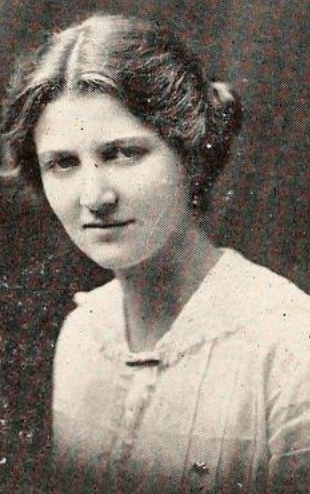
Annie Clo Watson was an American social worker based in San Francisco, best known for her efforts on behalf of Japanese Americans during and after World War II.
Chiye Mori was a Japanese-American poet and journalist who was influential in the Nisei literary community in Los Angeles in the 1930s. While incarcerated at Manzanar, Mori was the first female editor of the Manzanar Free Press newspaper.
Mako Nakagawa was a Japanese American educator, director of the Japanese American Cultural Heritage Program and the Rainbow Program, and influential member of the Japanese American Citizen's League.
References
- 1 2 3 4 5 "Chiye Tomihiro, 1924-2012". Chicago Tribune. 2012-11-29. Retrieved 2023-07-06.
- 1 2 3 4 5 6 7 8 9 Tateishi, John; Daniels, Roger (1999). And Justice for All: An Oral History of the Japanese American Detention Camps. University of Washington Press. pp. 239–2421. ISBN 978-0-29580-3-944.
- 1 2 3 4 "h023 - Chiye Tomihiro". collections.carli.illinois.edu. Retrieved 2023-07-06.
- ↑ "Incarceration by executive order". Washington Post. Retrieved 2023-07-06.
- 1 2 "Chiye Tomihiro". Densho Digital Repository. Retrieved July 6, 2023.
- 1 2 3 4 5 "Video interview with Chiye Tomihiro (includes transcript of interview)". openarchives.umb.edu. Retrieved 2023-07-06.
- ↑ Chiye Tomihiro , retrieved 2023-07-06